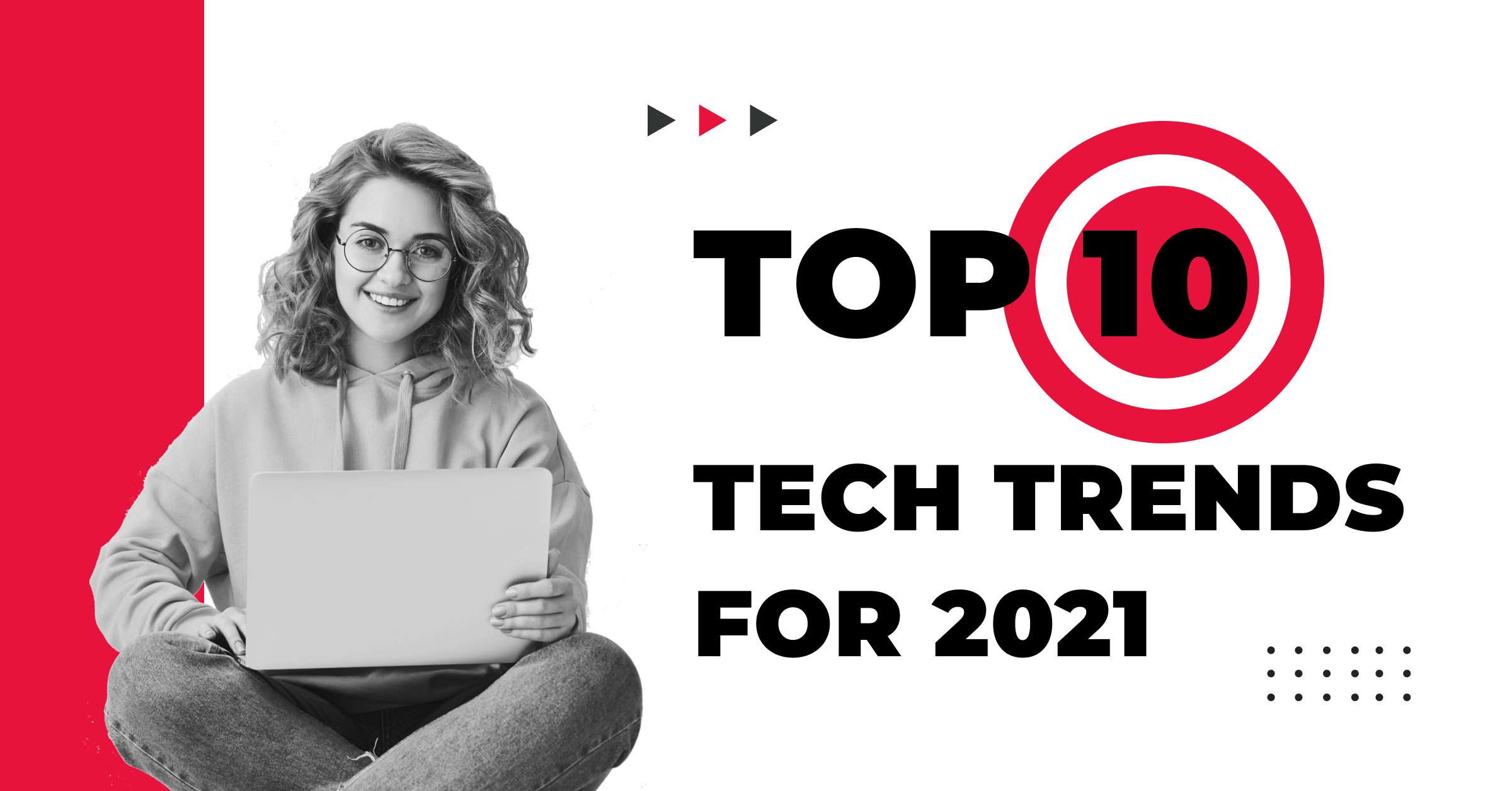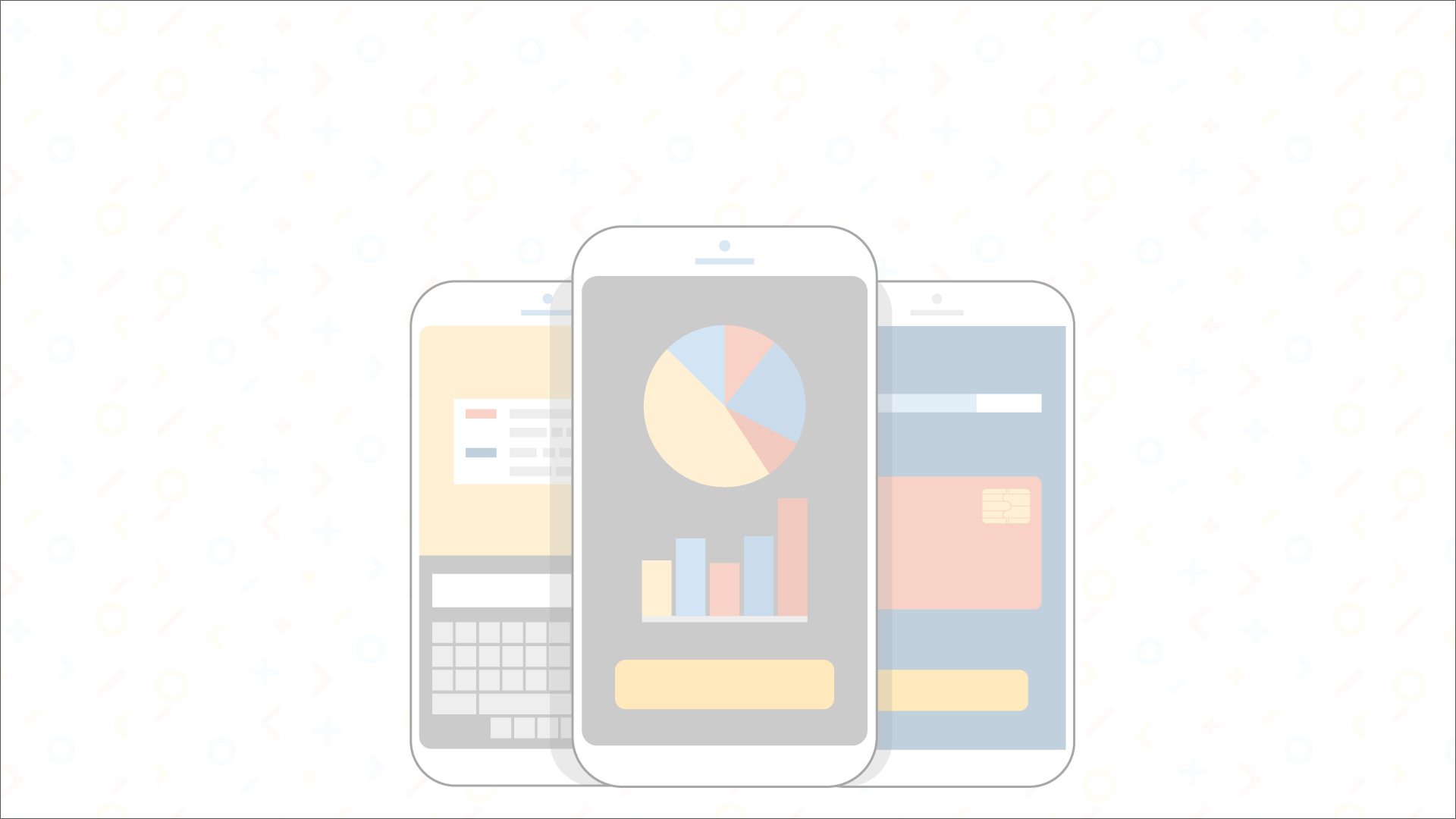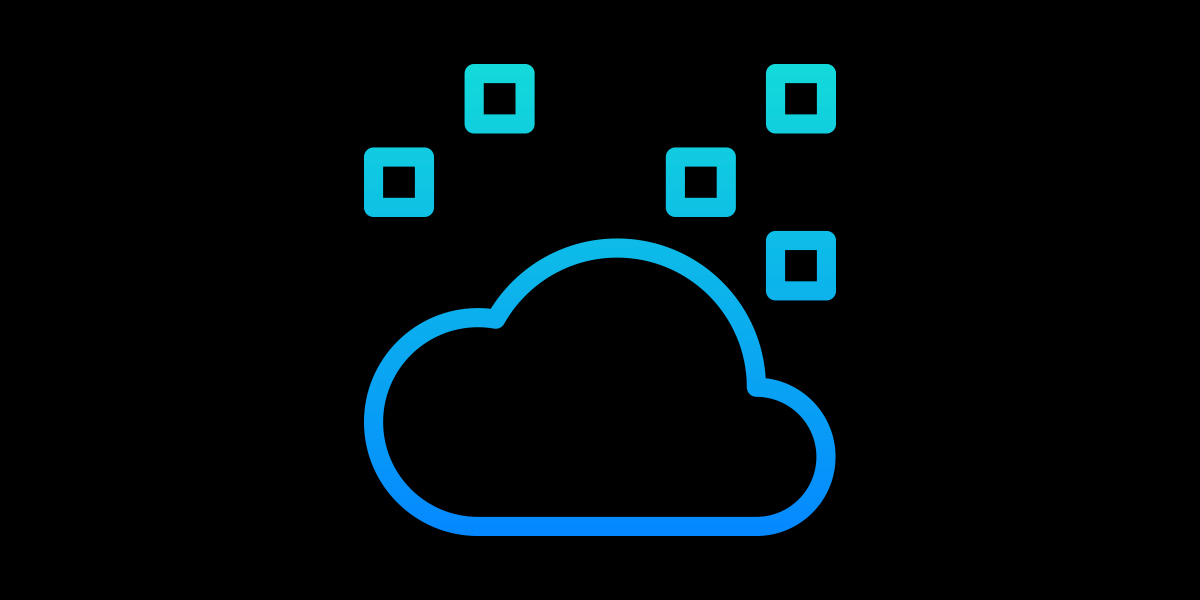With COVID-19 still raging and vaccines already being tested, 2021 must be the year when we break free from the shackles of the pandemic. It is with the help of the latest tech advancements, such as cloud computing, the IoT, real-time Big Data analytics, and Machine Learning, that we can defeat the disease. Yet, there is a need to understand that the pandemic was not solely a crisis; it also was a major disruptive factor that forced many companies to refresh their modus operandi. Back in the day, listing themselves on GrubHub, UberEats, and other delivery services was an option for restaurants. Nowadays, it is an essential thing to do if they want to survive.
The same rule applies to nearly any industry and niche. This means that there is a huge demand for new software products and services, as well as a prominent rise in new tech trends. We researched the public sources, added a few industry insights from our experience, and are proud to present you with the top 10 tech trends to follow in 2021.

Cloud Computing for Processing Vast Data Arrays
While not actually a trend, cloud computing is more like a prime choice for any business that wants to be future-proof. All the latest technological or scientific advancements require excessive amounts of computing power to process the data, so cloud computing is now the mainstream approach to software development, management, and deployment.
Available under SaaS (Software-as-a-Service), PaaS (Platform-as-a-Service), IaaS (Infrastructure-as-a-Service), or serverless computing models, cloud computing resources are billed under the PAYG (Pay As You Go) approach. Thus, you have to pay only for the resources consumed, meaning there are no advance subscription plans. This ensures maximum cost-efficiency when processing vast data arrays. Due to this approach’s popularity, Gartner forecasted the public cloud revenue to grow to $258 billion by the end of 2020, which is $15billion more than in 2019.
Cybersecurity for Protecting Data under the Zero Trust Policy
Cybersecurity has always been one of the most important aspects of any business that runs its core operations online. With the mass transition to remote work and the exponentially growing complexity of cloud infrastructure (e.g. Kubernetes clusters running Docker containers with microservices), the possibility of security breaches grows at an immense pace. Thus, the need to monitor who, how, and why access your digital assets becomes even more pressing.
The Zero Trust Policy is a burgeoning cybersecurity trend that renders none of the system components as the one with preconfigured and absolute admin rights with hardcoded credentials. Hence, every action to be performed within the system requires every component to authenticate. As a result, the risk of malicious actors gaining access to such credentials and misusing them is being eradicated.
Sure, the need to dynamically manage the input received and the permanently stored data (credentials, access tokens, API and SSH keys, ephemeral keys, etc.) adds another layer of complexity to cybersecurity operations. Yet, leaving this matter unattended leaves your infrastructure vulnerable to intrusions.
AI, ML and Big Data Analytics
It is obvious that analyzing millions of pictures manually consumes a lot of time and funds. Applying cloud-based Artificial Intelligence algorithms and Machine Learning models lets scientists leverage the latest technological advancements capable of accelerating different kinds of crucially important research. These Big Data analytics techniques can be used for COVID-19 vaccine development, cancer and ulcer early diagnosis, predicting and preventing heart attacks prevention, etc.
Moving on, Big Data analytics can serve a wide variety of industries — from healthcare and manufacturing to software engineering and infrastructure management – with predictive and prescriptive analytics. Deep Neural Networks trained to use data records are deployed to production environments to track hundreds of indicators, thus identifying normal and abnormal performance metrics. As result, a company flees from equipment breakdowns and service-incurred injuries.
Telehealth, Wearables, and Telemedicine Solutions
Post-operational recuperation takes much more time than a patient due to many reasons to afford to spend at the hospital. The telemedicine and telehealth solutions, such as smart sensors in wearables, enable efficient outpatient care. AARP evaluates this market size at $7.6 billion, which is relatively easy to understand given the current need for products it offers. With the COVID-19 pandemic and global lockdowns limiting the patients’ ability to visit their physicians, telehealth solutions’ importance grew tenfold. Naturally, these platforms have to be cloud-based to leverage the benefits like scalability, cybersecurity, and AI/ML-augmented Big Data analytics.
5G and IoT Collective Effort: Smart Cities Supporting the Healthcare Industry
Good connectivity is the crucial prerequisite for enabling smart devices’ stable operation. Therefore, flawless 5G coverage is the next step in ensuring a stable uplink for real-time availability of various software products and services. The global market evaluation of smart cities envisions them growing from $410.8 billion in 2020 to $820.7 billion by 2025. As a result, we can talk about a plethora of opportunities for innovative entrepreneurs working in the healthcare industry to make use of. Smart city projects with multi-level edge computing infrastructure regulating traffic, street lights, waste disposal, drone delivery, etc. are here to stay.
Document Processing Robotic Automation
RPA is another prominent trend allowing businesses to be more customer-oriented, competitive, and cost-efficient due to document processing tasks automation. Salesforce survey showed that 76% of customers expect the businesses to treat them personally, understand their needs, and exceed their expectations. Yet, the number might be closer to 100%, we think.
However, it’s quite hard for ever-growing companies to remain customer-focused when the volumes of documentation to process manually become overwhelming. Thus, automating document processing with RPA tools frees up the time and resources needed to provide that personalized customer service. Those who feel like manual document processing is still their thing can book a place in the long queue of companies that are going down.
Contactless Delivery and Payments
Most of the businesses had to switch to contactless payments to survive during lockdowns. As it turned out, this approach favors both businesses and customers and is becoming increasingly popular. It is expected to grow by 500% – from $1.2 billion in 2019, to $5.4 billion by 2027, boasting a CAGR of 20.6%.
Industry 5.0 Replacing Mass-Production
With the COVID-19 pandemic disrupting the global supply chain, mass-production experiences troubles with fulfilling contractual obligations and an ever-dwindling customer base. Industry 5.0 using 3D printing and technologies of additive manufacturing allows rapid reconfiguration of equipment to customize the product for every individual customer.
When a manufacturer can easily switch between its production capacities, making them meet the market demand — the lead times are much shorter and the customer satisfaction is much higher. As the latest report on Industry 5.0 from Reports and Data suggests, the additive manufacturing market currently grows at 14.4% YoY and is expected to rise as high as $27 billion by 2027.
AR and VR Entering Professional Training and Healthcare
Augmented Reality and Virtual Reality have outgrown their PokemonGO infancy and are now conquering various market niches. VR sets proved useful for enabling virtual tourism, creating simulated laboratory environments for conducting dangerous experiments without risk, and wasting consumables — which proved especially useful during lockdowns. More importantly, the VR tools help adults master skills remotely. For example, newly hired oil rig workers can train to perform their jobs onshore and be prepared for their first shift.
AR/VR is also actively used in entertainment and education, interior design, eCommerce, and even in healthcare. Little patients afraid of vaccination can now experience exciting adventures, where they gain superpowers to protect magic kingdoms — instead of crying loudly while seeing a sharp needle.
Autonomous Driving Vehicle Systems Skyrocketing
With Elon Musk presenting the new generation of Tesla vehicles and trucks and Mercedes Benz successfully testing their fleet of autonomous trucks, the future of self-driven cars is gradually becoming the present. While Tesla’s market cap is steadily growing, it’s high time for software developers to think of the apps and tools the future passengers of autonomous vehicles would like to use.
Besides, these electric vehicles will need a network of charging stations and a market of energy. This is a point of contact with the energy industry, which uses blockchain-based energy trading platforms to sell and buy green energy from solar, thermal, wind, tidal and other alternative sources.
Conclusion
The year 2021 will mark the businesses’ need to adapt to new post-pandemic and post-quarantine reality. Those who want to win the rejoice in commercial peace have to get ready for the war of tech trends. 2021 will be more like a sprint than a marathon: the first to implement the changes required will gain the most momentum in business development. Following the trends we talked about today is rather more of a requirement and not a whim for every business looking to grow in 2021.







